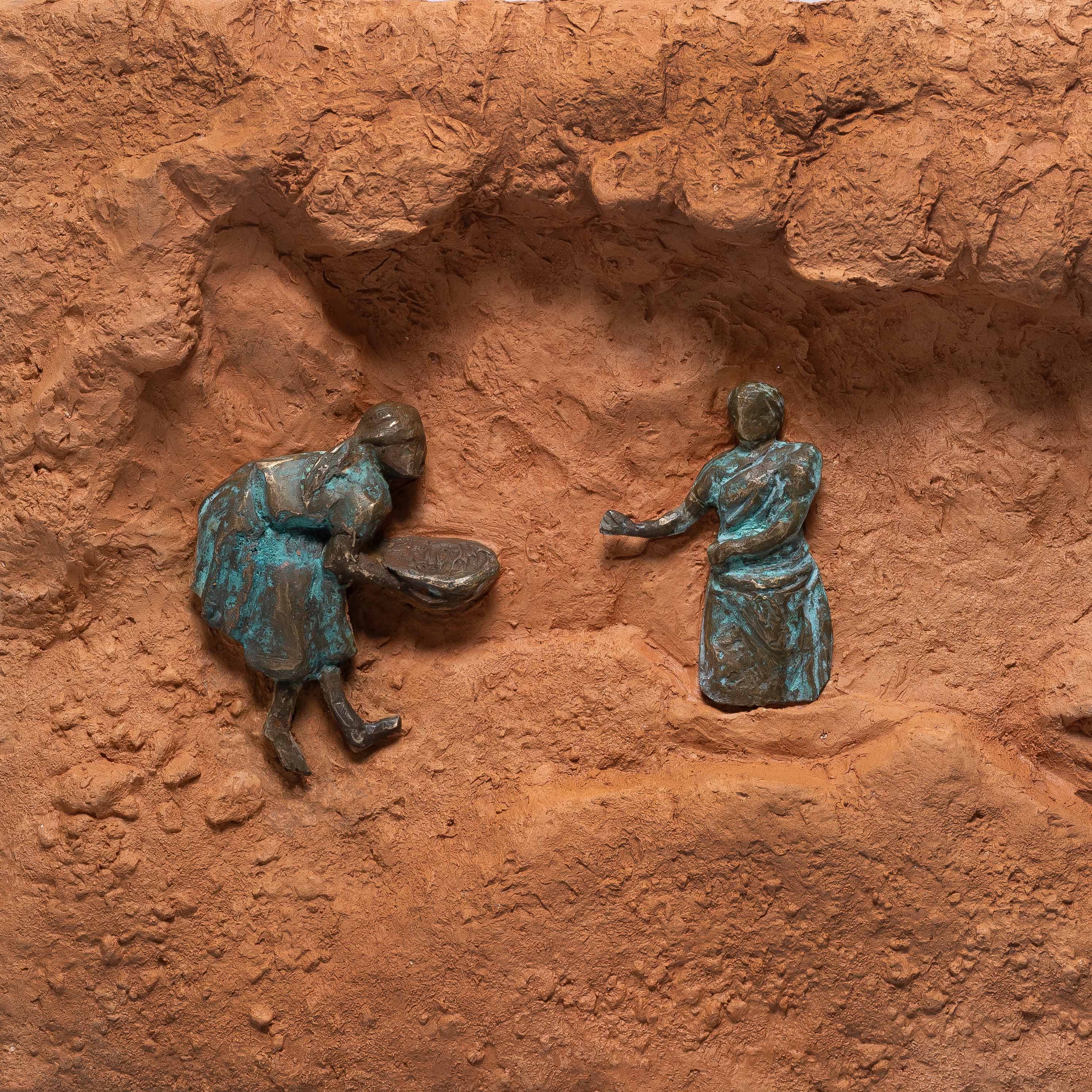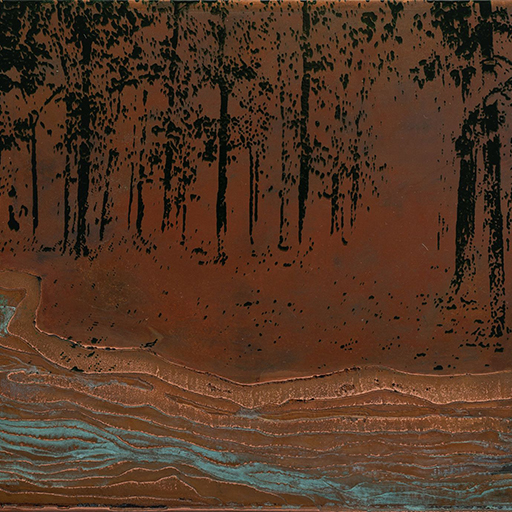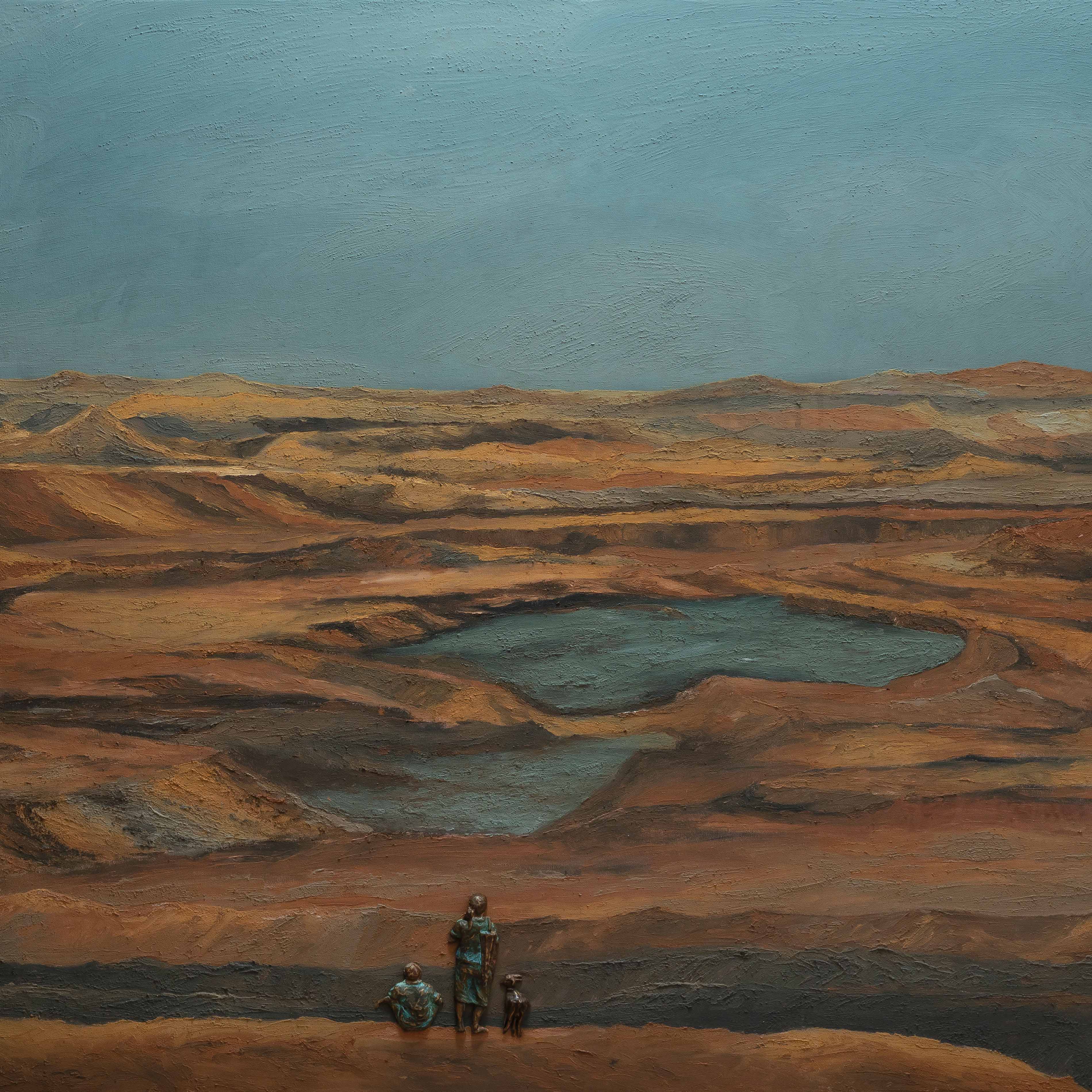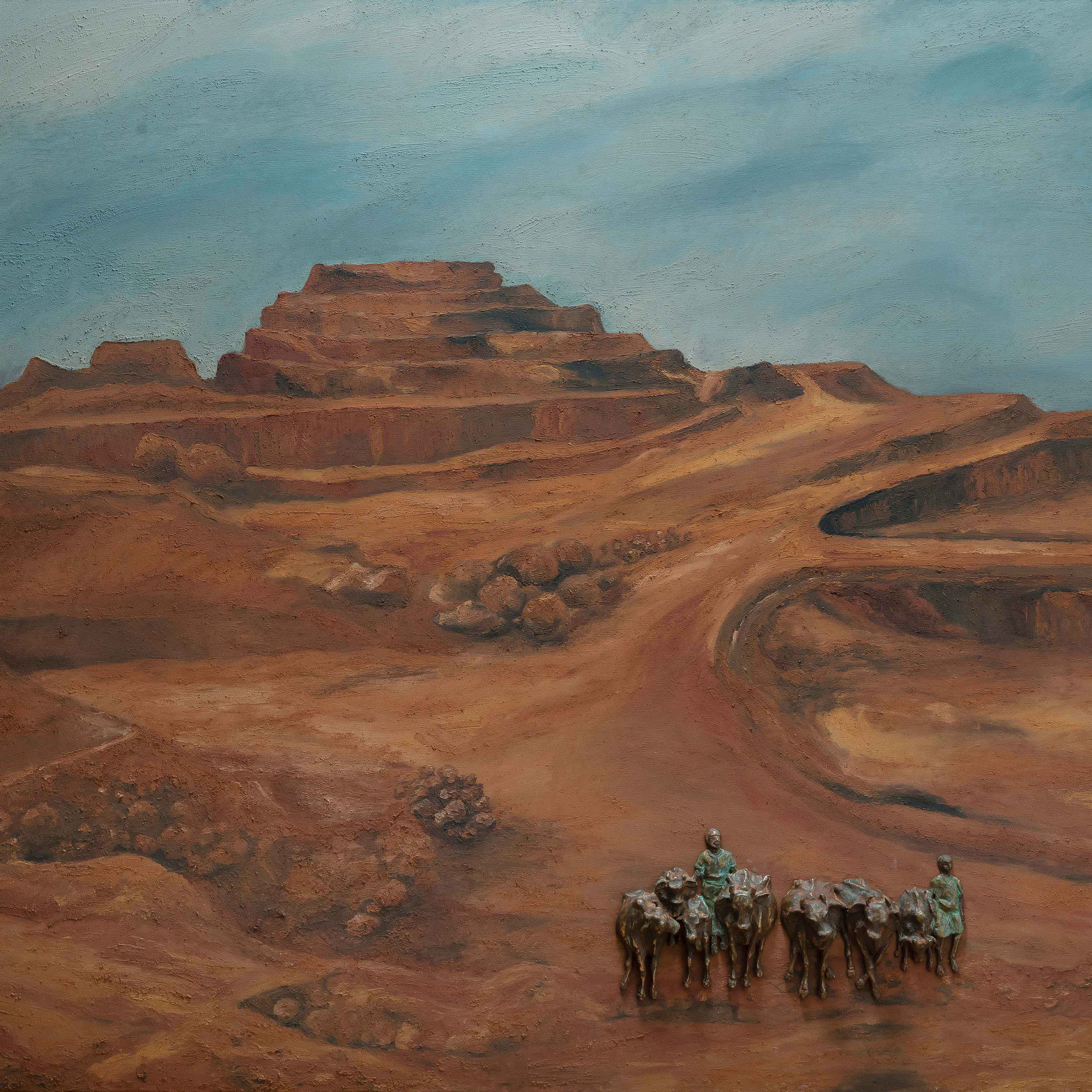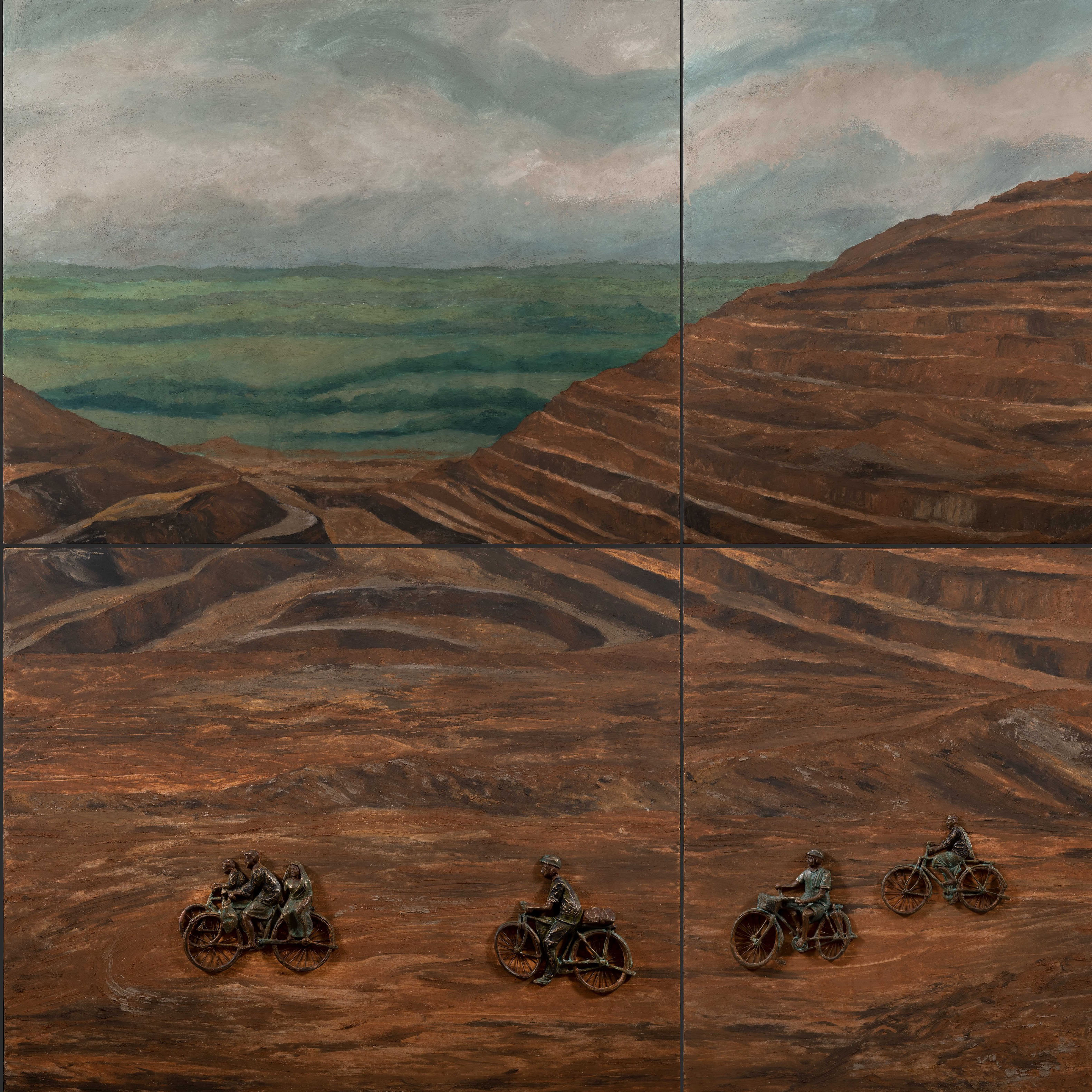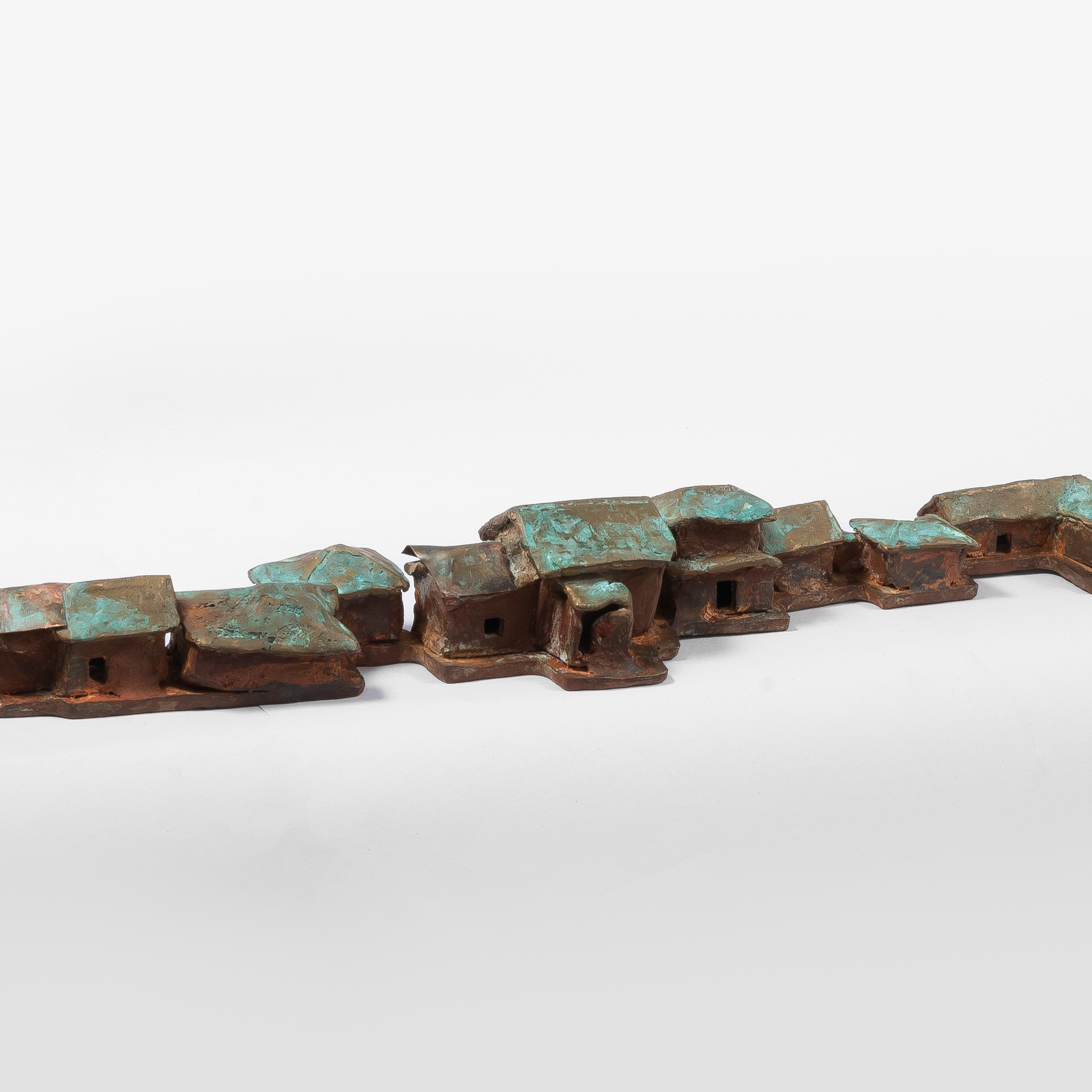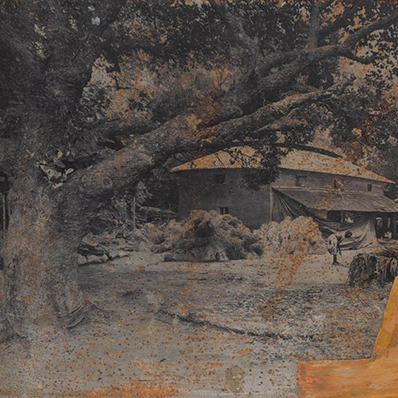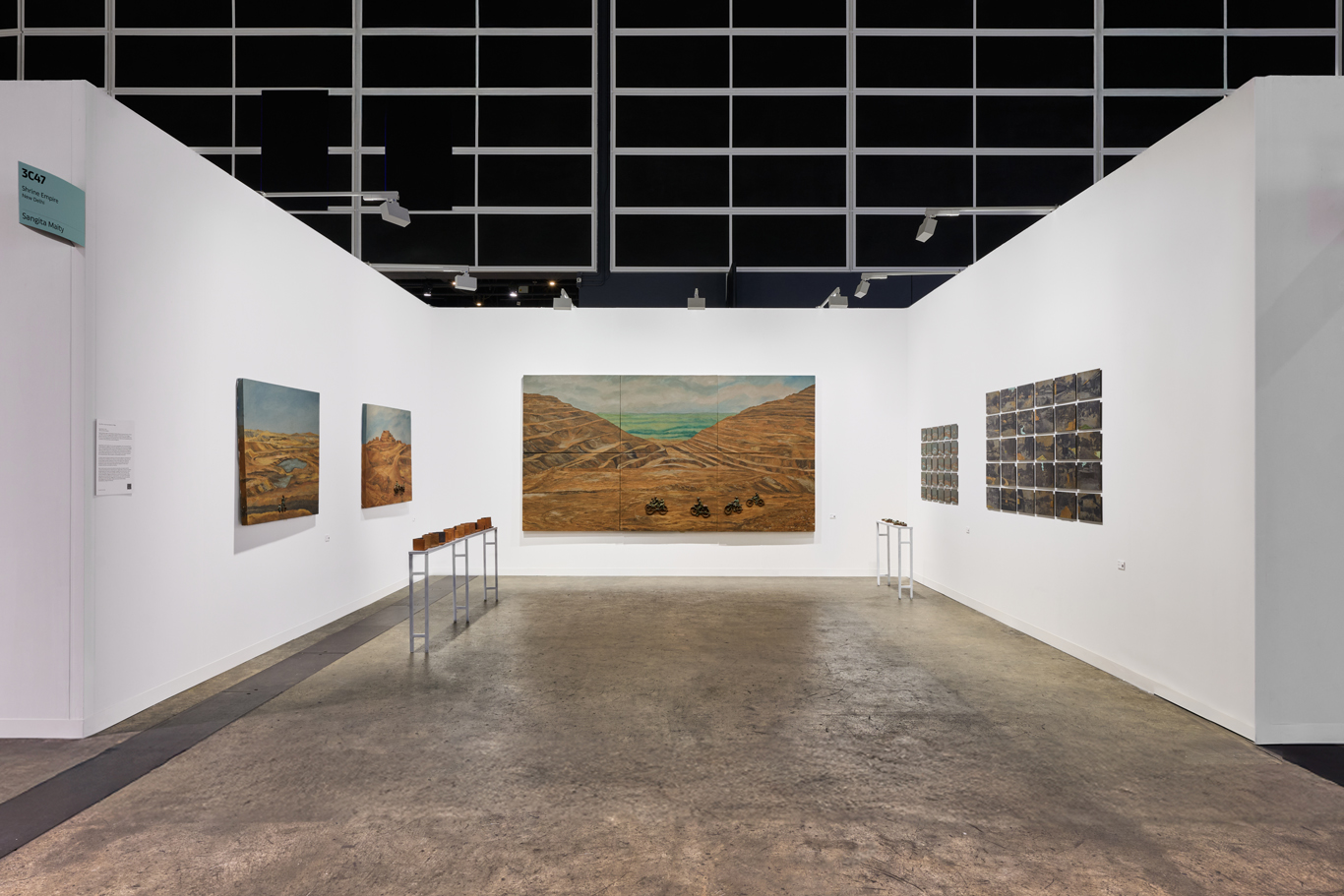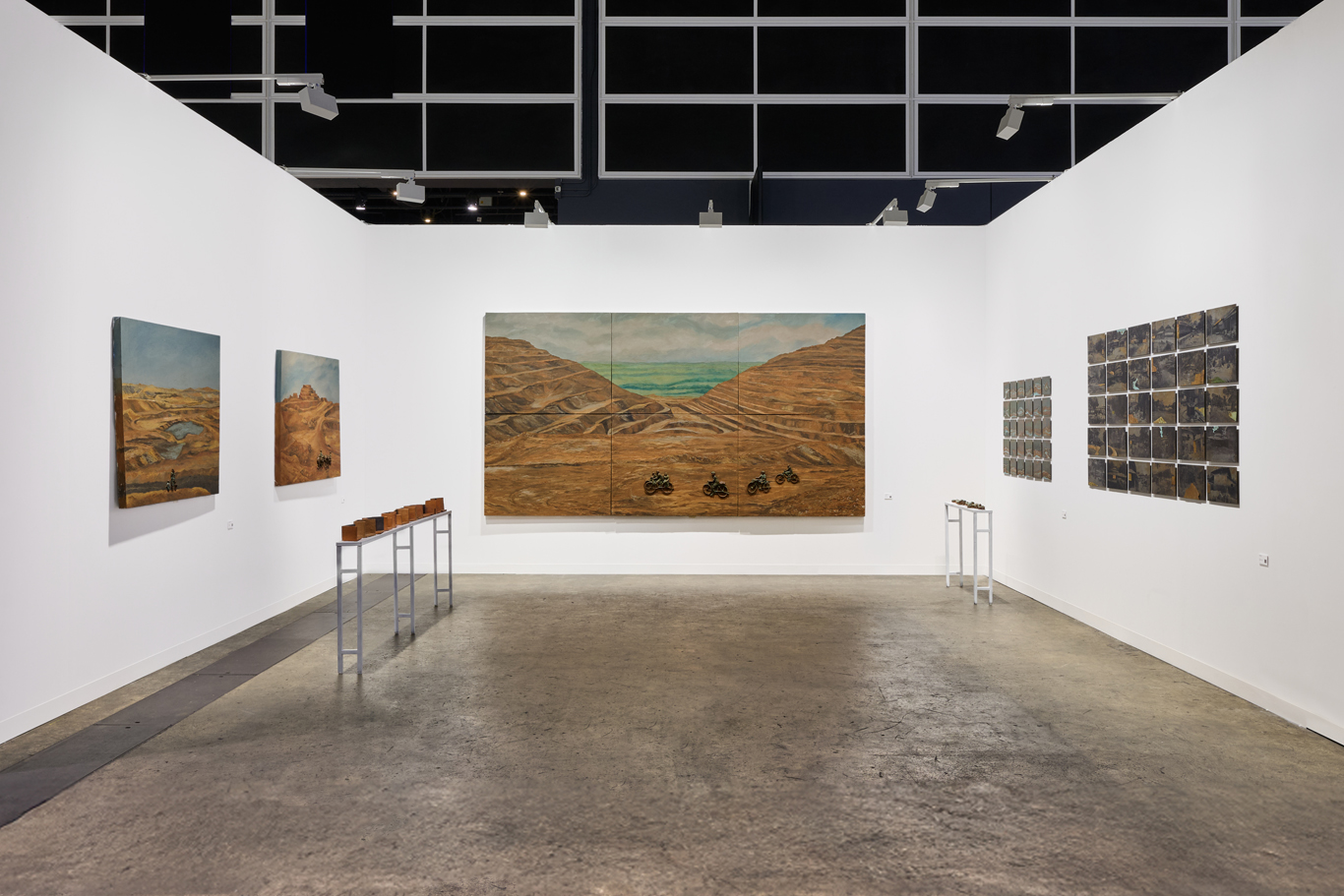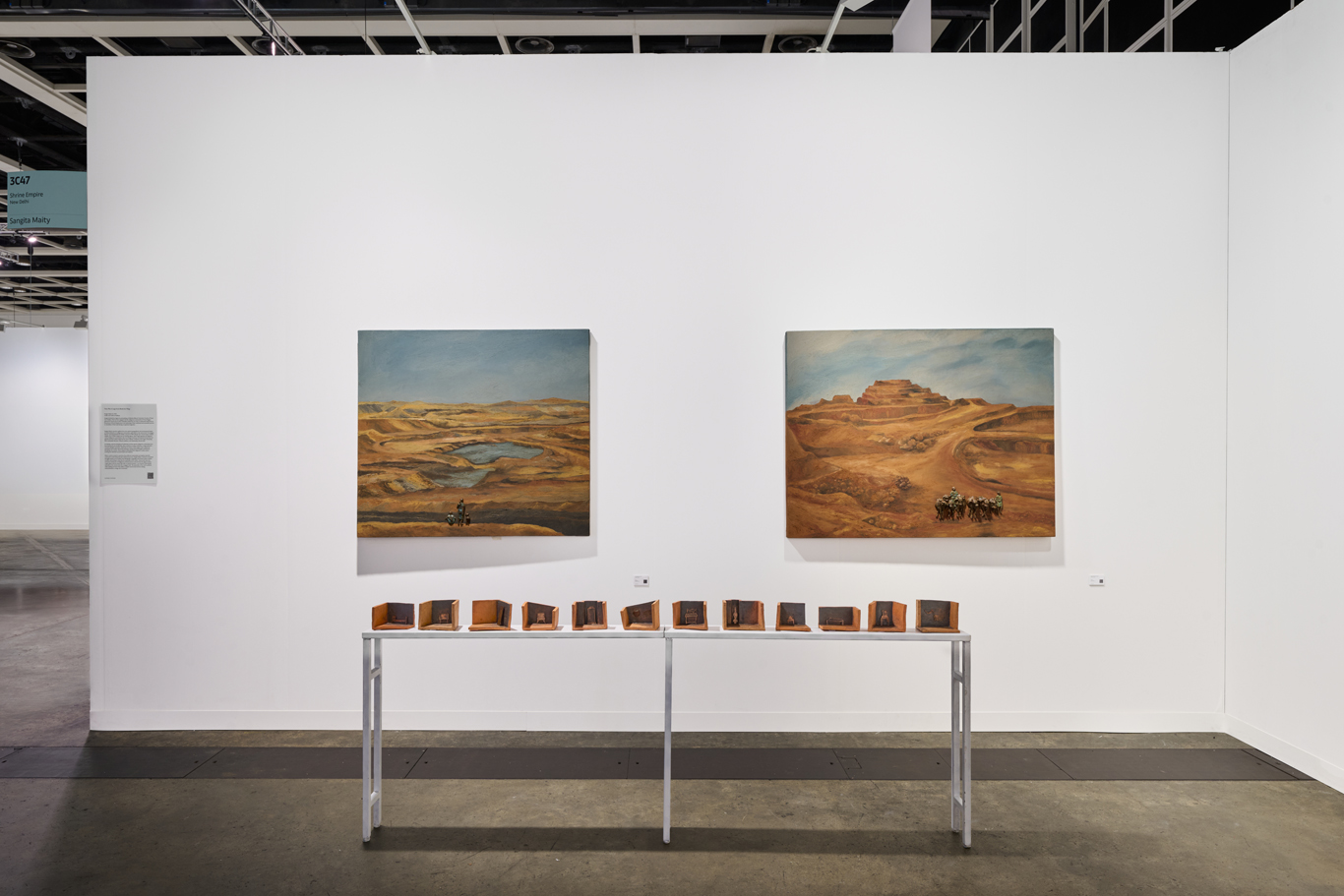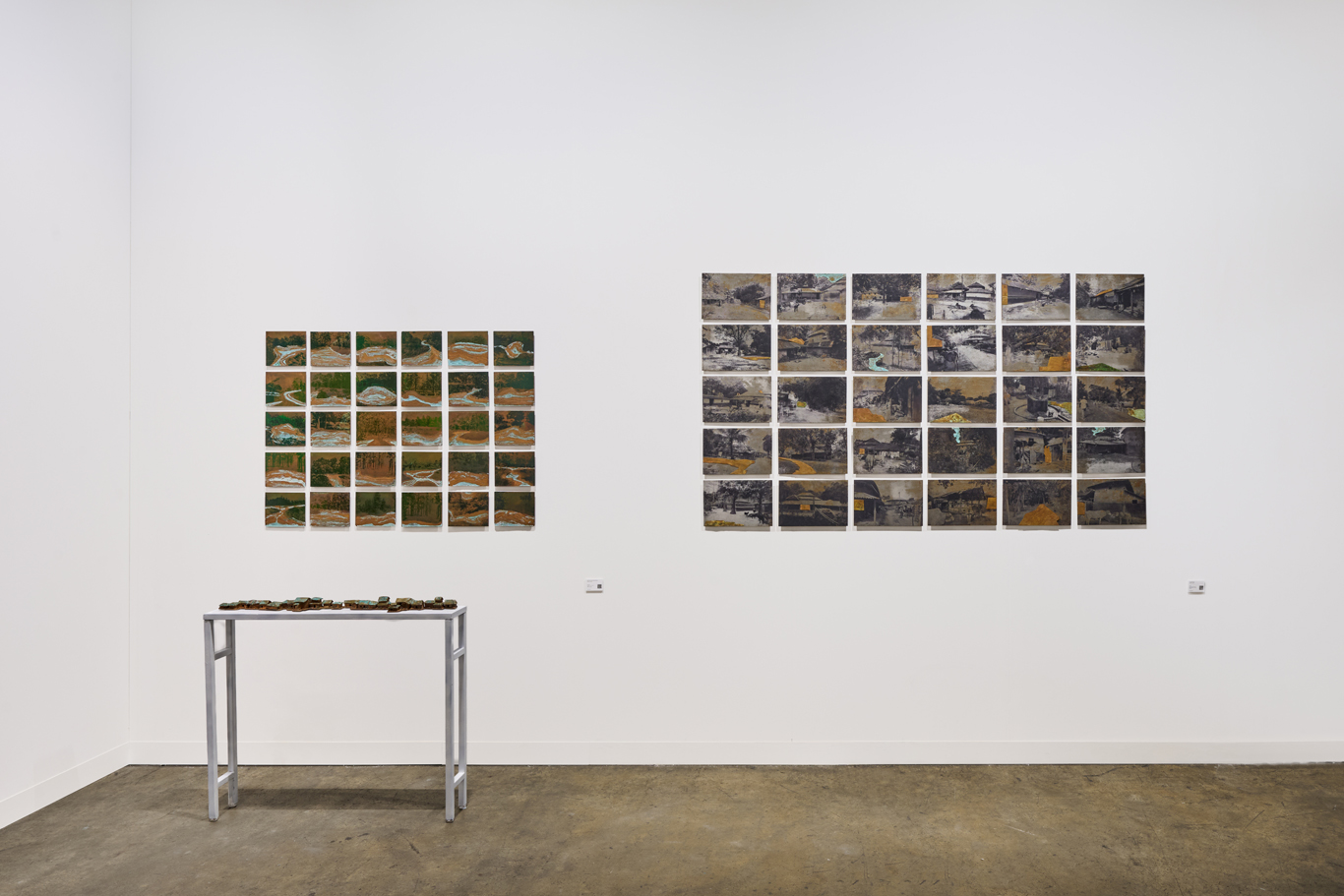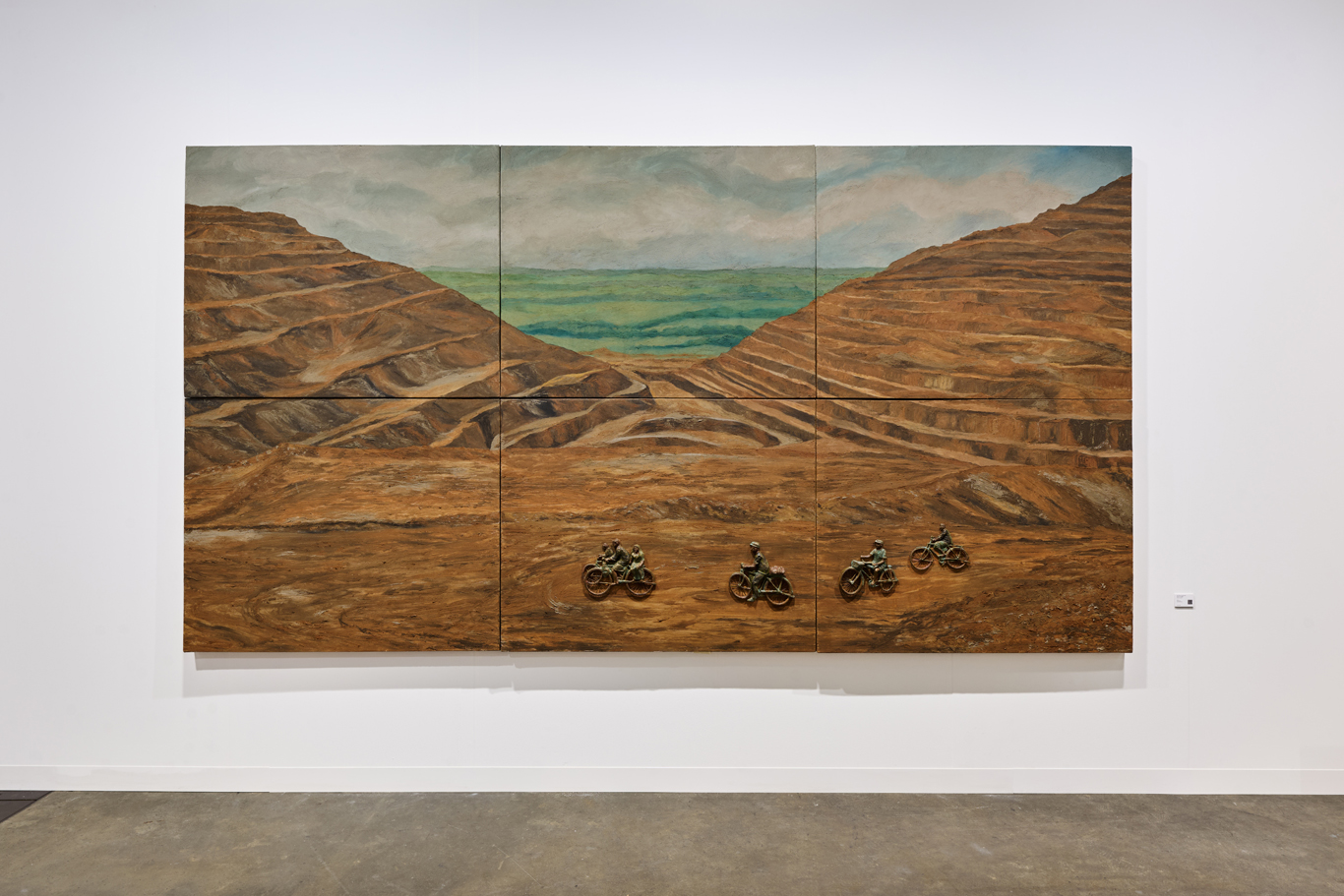-
Exhibitions
- Art Basel | Hong Kong 2025 | Solo Show |
Booth 3C47
- — Sangita Maity
There Was a Large Forest Beside the Village
Sangita Maity’s practice explores the socio-cultural, geographical, and environmental impact of industrialization on indigenous communities, particularly in the mineral-rich Chotanagpur Plateau, spanning Jharkhand, Odisha, and parts of West Bengal. Her research began in Barbil, Odisha, one of India’s largest iron ore mining regions, where rapid expansion has displaced various indigenous communities who were living in harmony with densely forested land and agrarian practices which supported the native climatic conditions of the region, disrupting their sustainable lifestyles, cultural traditions, and relationship with the land.
As mining, corporate farming and industrial activities spread, indigenous communities have been forced into new livelihoods, often as laborers in mines, industries, or large-scale farms owned by Bengal’s zamindars. Hydroelectric projects which support these commercial enterprises have further altered the landscape, causing seasonal droughts and floods by disrupting river systems. Many displaced individuals have migrated to urban centers, severing ties with their ancestral lands and traditions.
Maity’s work is rooted in narratives from affected communities and employs materials connected to both industrial and traditional practices. Sangita Maity's research is articulated through sensitive use of media, from lithographs, serigraphy and woodcut prints to photo transfers and etching in ways that the materiality of her works—from wood, brass and terracotta reminiscent of indigenous artisinal practices and soil from the region as well as copper plates and iron sheets that refer to natural resources—are evocative of the familiar materials in the contexts that she is engaged with. The materiality of her work is political, while yielding narratives that address complex intersections between mining, industrialization, ecology and community.
